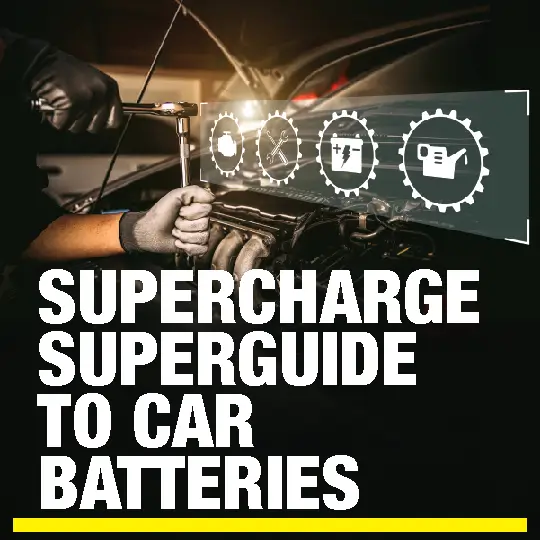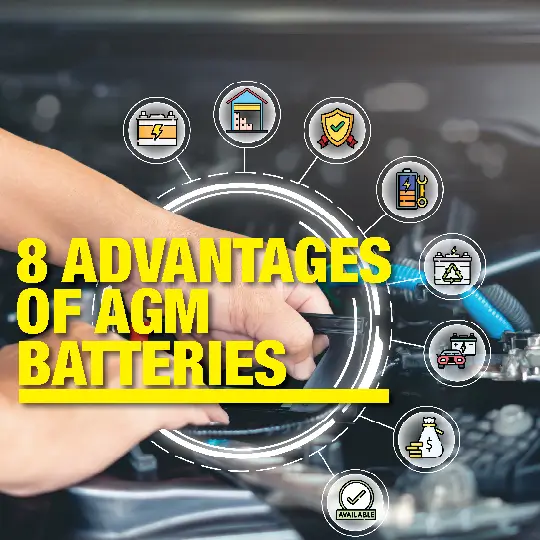Supercharge Superguide to Car Batteries
Supercharge Superguide to Car Batteries
Looking for the perfect car battery? Look no further!
Welcome to the Supercharge Superguide to Car Batteries, your ultimate resource for everything you need to know about selecting, installing, and maintaining your car’s pacemaker. At Supercharge, we understand the critical role that car batteries play in keeping your vehicle running smoothly and reliably. With our unparalleled expertise and commitment to quality, we offer a range of premium car batteries designed to supercharge your driving experience.
In this comprehensive guide, we’ll delve into why choosing Supercharge car batteries is the smart choice, explore our GoldPlus battery range, provide invaluable tips for selecting the right battery, offer insights into proper battery installation, discuss warranty extensions for added peace of mind, and share essential maintenance tips to maximize battery and car life.
Why Choose Supercharge Car Batteries
When it comes to powering your vehicle, reliability is paramount. That’s why countless drivers across Australia trust Supercharge car batteries to deliver exceptional performance, every time. Here’s why:
- Unmatched Quality: Supercharge batteries are built to the highest standards, utilizing cutting-edge technology and premium materials to ensure optimal performance and longevity.
- Superior Performance: Whether you're navigating city streets or tackling off-road terrain, Supercharge batteries are engineered to deliver consistent power, even in the most demanding conditions.
- Trusted Brand: With a reputation for excellence spanning over 4 decades, Supercharge is the brand of choice for drivers who refuse to compromise on quality.
- Extensive Range: From compact cars to heavy-duty trucks, Supercharge offers a comprehensive range of batteries to suit almost every vehicle type and driving need.
Unveiling the Powerhouse: Supercharge GoldPlus Car Batteries
When it comes to powering your vehicle with an auto battery, Supercharge offers a formidable contender: the GoldPlus car batteries. These premium battery range is engineered to deliver unparalleled performance, reliability, and longevity, but they cater to different driving needs and preferences. Let’s delve into the advantages of GoldPlus batteries and explore why they should be your top choice for your next car battery replacement.
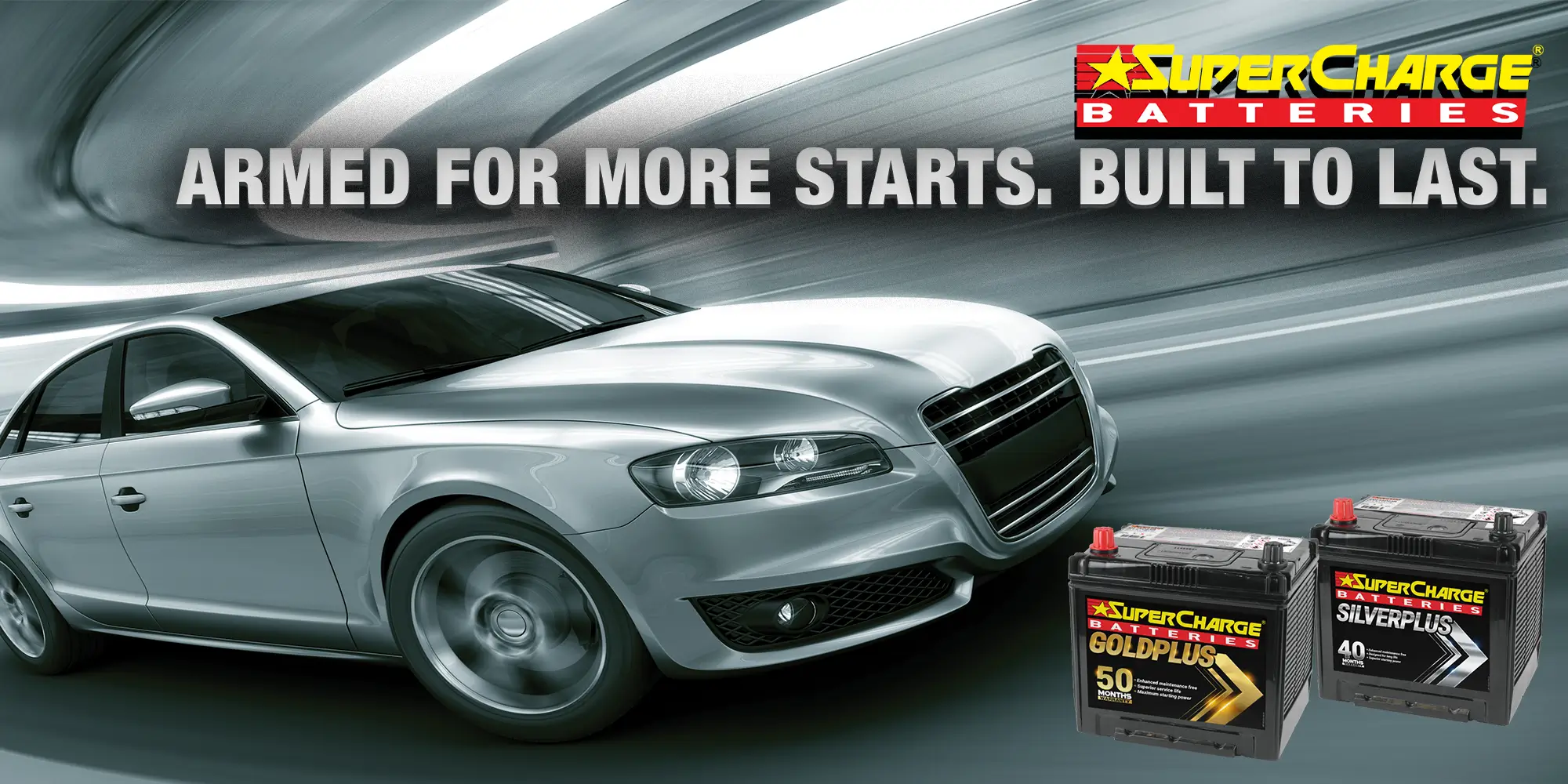
Supercharge GoldPlus: Everyday Excellence
If you’re seeking reliable performance and exceptional car battery price for your daily driving needs, look no further than the Supercharge GoldPlus battery range. Engineered with quality and affordability in mind, GoldPlus batteries offer dependable starting power and longevity, making them the perfect choice for everyday vehicles and budget-conscious drivers.
Here’s why GoldPlus batteries stand out:
- Reliable Performance: GoldPlus batteries are designed to deliver reliable starting power in a wide range of driving conditions, ensuring dependable performance when you need it most.
- Affordable Excellence: Despite their affordable price point, GoldPlus batteries don't compromise on quality or performance, making them an excellent value for drivers looking to maximize their investment.
- Versatility: From compact cars to family SUVs, GoldPlus batteries are available in a variety of sizes and configurations to fit a wide range of vehicle makes and models, making them a versatile choice for any driver.
Why Choose Supercharge GoldPlus Batteries?
- Unmatched Quality: GoldPlus batteries are engineered to the highest standards, utilizing advanced technology and premium materials to ensure optimal performance and longevity.
- Tailored Solutions: Whether you're a performance enthusiast seeking maximum power and durability or a daily driver in need of reliable starting power, Supercharge offers a battery solution to meet your specific needs and preferences.
- Industry-Leading Warranty: Goldplus boast some of the best industry warranties at up to 50 months, just register for the Supercharges warranty extension!
Whether you’re conquering the toughest terrain or navigating the urban jungle, Supercharge GoldPlus batteries are your ultimate partners on the road to excellence. Choose Supercharge for unmatched performance, reliability, and peace of mind for your next car battery purchase. Explore our full range of premium car batteries and find the perfect battery for your car with just your rego.
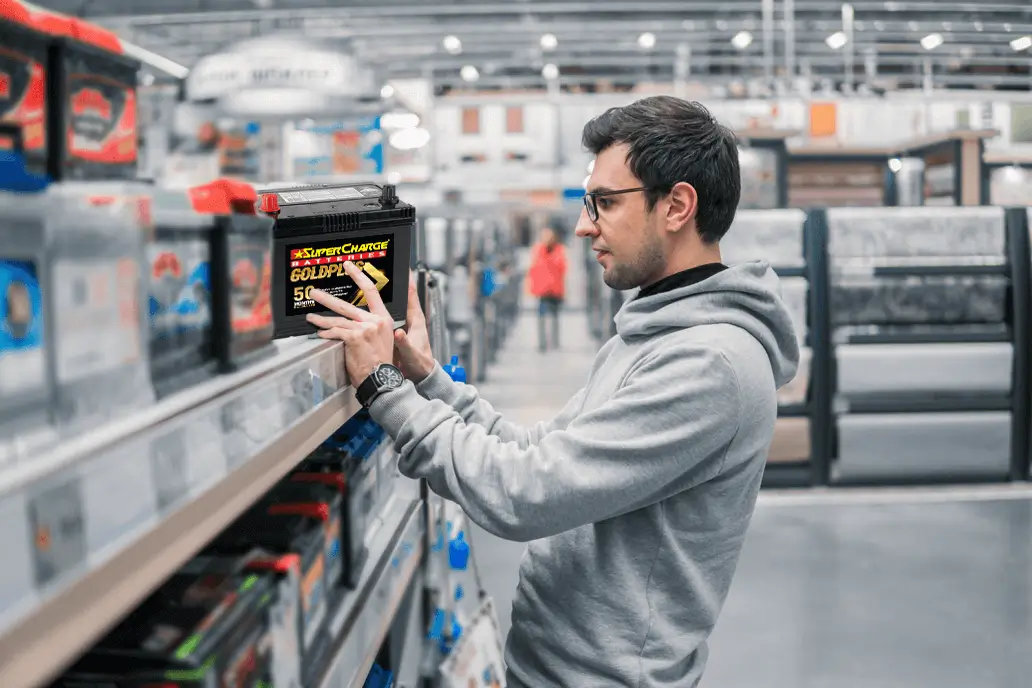
Selecting the Right Battery for your car
Choosing the right battery for your vehicle is essential to ensure optimal performance and longevity. When browsing at our car batteries, use this useful guide to help you understand what to look for. You can also use SuperCharge battery finder to assist you.
- Compatibility:
Make sure the battery you choose is compatible with your vehicle's make, model, and power requirements. Use our car battery finder to match your car with a GoldPlus battery. - Battery Size/Dimension:
- The size of the battery refers to its physical dimensions, including length, width, and height.
- Different vehicles require batteries of specific sizes to fit into the battery compartment properly.
- When selecting a battery, it's crucial to choose one that matches the size requirements of your vehicle to ensure proper installation and fitment.
- Technology:
- Battery technology refers to the type of technology used in the construction and operation of the battery.
- Common battery technologies for automotive applications include Flooded (Vented) and Valve Regulated (Absorbed Glass Mat- AGM) Lead-acid batteries.
- Consider the specific needs of your vehicle; replace your battery with similar to the original equipment (OE) battery.
- CCA (Cold Cranking Amps):
- CCA measures the battery's ability to start the engine in cold temperatures.
- It represents the maximum current that the battery can deliver for 30 seconds at 0°F (-18°C) without dropping below a specified voltage.
- Higher CCA ratings indicate better cold-start performance, which is crucial in cold climates or for vehicles with high-compression engines.
- RC (Reserve Capacity):
- Reserve capacity refers to the number of minutes a fully charged battery can deliver a constant current of 25 amps at 80°F (27°C) until the voltage drops below a certain level (usually 10.5 volts).
- It indicates the battery's ability to power essential vehicle functions in case of alternator failure or electrical system overload.
- Higher reserve capacity ratings indicate longer backup power and better reliability in emergency situations.
- AH (Ampere-Hour):
- Ampere-hour is a measure of the battery's capacity to store electrical energy over time.
- It represents the total amount of charge a battery can deliver at a specific rate of discharge over a certain period.
- Higher AH ratings indicate greater energy storage capacity, which can provide longer-lasting power for accessories and electrical components in the vehicle.
- Assembly/Polarity Orientation:
- Polarity Orientation refers to location of the positive and negative terminals
- The location of positive /negative terminals must match the terminal configuration of the vehicle.
- Terminal Type:
- Terminal type refers to the material and configuration of the battery terminals.
- Terminal type includes Standard posts, pencil posts, side terminal and others.
- Common terminal types include lead, copper, and brass terminals, each with its conductivity and corrosion resistance properties.
- The terminal type should be compatible with the vehicle's wiring system to ensure secure and reliable electrical connections.
- Ledge:
- The ledge refers to a raised platform or protrusion on the battery casing that provides additional support and stability when installed in the vehicle's battery tray. It is normally required for vehicle’s with bottom hold down requirement.
- It helps prevent the battery from shifting or moving during vehicle operation, reducing the risk of damage to the battery or surrounding components.
- Accessibility:
- Automotive batteries can be maintenance-free or maintainable (accessible)
- Hydroeye:
- Maintenance-free batteries may have a hydroeye indicator to monitor electrolyte levels and ensure proper battery maintenance.
- Understanding the hydroeye status is essential for monitoring battery health and performance over time, especially in lead-acid batteries.
Find a Supercharge car battery near you
Once you’ve selected the perfect battery for your vehicle from Supercharge’s extensive range, find your nearest reseller is quick and easy with our “Find a Dealer” map. Enter your location details to discover a network of authorized Supercharge dealers conveniently located near you. Whether you’re in need of professional installation services, expert advice, or simply want to purchase your chosen battery in person, our trusted dealers are ready to assist you.
With a commitment to customer satisfaction and excellence in service, Supercharge dealers ensure a seamless and hassle-free experience so you can get back on the road with confidence. Visit our website today to find your nearest Supercharge dealer and experience the convenience of shopping for your automotive battery needs.
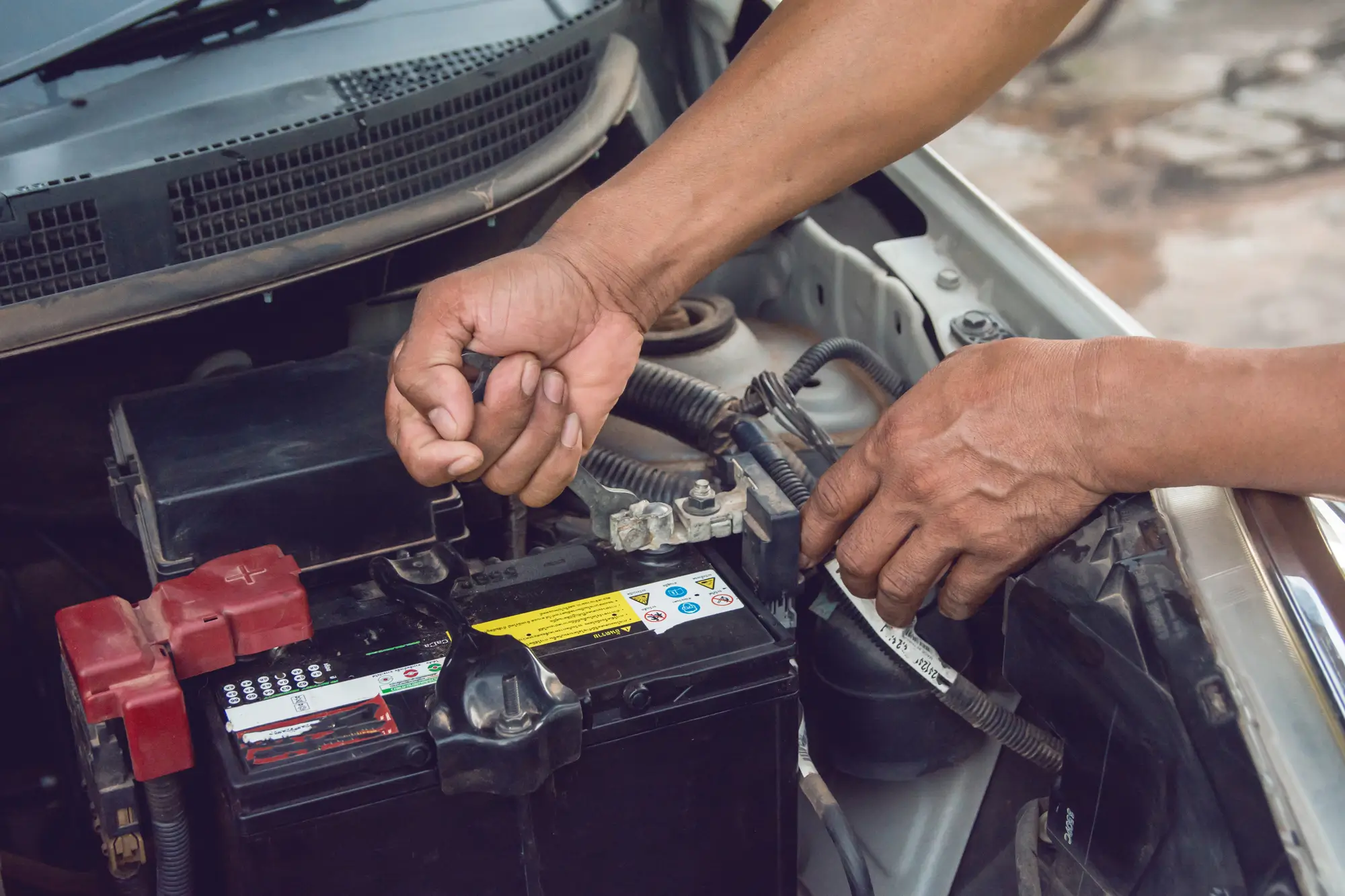
How to install a car battery
Here are the top 10 car installation tips to ensure you a smooth and successful battery replacement process:
By following these top 10 replace car battery tips, you can ensure a safe, efficient, and successful battery replacement process that will keep your vehicle running smoothly.
- Safety First: Before starting any installation, ensure the vehicle is parked on a flat surface with the engine off and the parking brake engaged. Additionally, wear appropriate safety gear, such as gloves and eye protection, to protect yourself from any accidents or injuries.
- How to disconnect car battery: Start by disconnecting the negative (-) terminal first, followed by the positive (+) terminal. Use a wrench or socket set to loosen the terminal nuts and carefully remove the cables, making sure they don't come into contact with each other or any metal surfaces to avoid sparks.
- Remove the Old Battery: Once the terminals are disconnected, remove any hold-down clamps or brackets securing the old battery in place. Lift the battery out of the battery tray carefully, taking care not to tip it over or spill any electrolyte.
- Inspect the Battery Tray: Before installing the new battery, inspect the battery tray for any signs of corrosion, damage, or debris. Clean the tray with a wire brush and a solution of baking soda and water if necessary, and ensure it's dry before proceeding.
- Prepare the New Battery: Before installing the new battery, inspect it for any damage or defects. Check the terminals for cleanliness and tighten any loose terminal nuts or bolts. If the battery requires electrolyte filling, follow the manufacturer's instructions carefully.
- Position the New Battery: Carefully place the new battery into the battery tray, ensuring it's oriented correctly with the terminals facing in the same direction as the old battery. Use hold-down clamps or brackets to secure the battery in place, ensuring it's stable and won't move during vehicle operation.
- Connect the Terminals: Begin by connecting the positive (+) terminal first, followed by the negative (-) terminal. Tighten the terminal nuts securely to ensure a solid electrical connection, but be careful not to over-tighten them to avoid damage.
- Test the Battery: Once the new battery is installed and connected, turn the ignition key to the "on" position and check that all electrical systems, such as lights, radio, and air conditioning, are functioning properly. Start the engine and ensure it starts smoothly without any issues.
- Secure the Battery: Double-check that the new battery is securely installed and properly seated in the battery tray. Ensure all hold-down clamps or brackets are tightened securely to prevent the battery from moving during vehicle operation.
- Car Battery Recycling: Safely dispose of the old battery at a designated recycling center or return it to the retailer or manufacturer for proper recycling. Avoid discarding old batteries in regular household waste, as they contain hazardous materials that can harm the environment if not disposed of properly.
Supercharge Car Warranty Information and Extension
When you have a product that you fully believe in, it makes sense to back it up. SuperCharge were the first to introduce the 36-month warranty on our Gold Maintenance Free batteries – setting a new benchmark for the industry. Even In our other battery ranges, the quality and care that has gone into producing them means that you are covered for an industry-leading ‘peace of mind’ warranty period.
Battery Maintenance
Regular maintenance is key to prolonging the life of your battery and ensuring reliable performance. Here are 10 essential tips for maintaining your car battery:
- Regular Inspection: Routinely inspect your battery for signs of corrosion, leaks, or damage and avoid a flat car battery. Look for any cracks in the casing, build-up of white or greenish corrosion around the terminals, or loose connections.
- Keep Terminals Clean: Clean the battery terminals regularly to prevent corrosion build-up, which can hinder electrical conductivity. Use a mixture of baking soda and water or a commercial battery terminal cleaner to remove corrosion, and ensure the terminals are tight and secure.
- Check Electrolyte Levels (if applicable): If you have an accessible flooded lead-acid battery, check the electrolyte levels regularly. If the levels are low, top up with distilled water as needed to maintain proper levels.
- Secure Battery Properly: Ensure the battery is securely mounted in the battery tray and properly secured with hold-down clamps or brackets. A loose battery can vibrate and become damaged, leading to premature failure.
- Avoid Over-Draining: Minimize the use of accessories, such as lights, radio, and air conditioning, when the engine is off to prevent over-draining the battery. Extended use of accessories without the engine running can deplete the battery's charge.
- Regular Driving: Regularly drive your vehicle to allow the alternator to recharge the battery. Short trips and infrequent driving can lead to insufficient charging, reducing the battery's lifespan.
- Battery Testing: Periodically test your battery's voltage and charge using a multimeter or have it tested by a professional. This can help identify any potential issues with the battery's performance and prevent unexpected failures.
- Protect from Extreme Temperatures: Extreme temperatures, both hot and cold, can affect battery performance. Park your vehicle in a garage or shaded area during hot weather to reduce heat exposure, and consider using a battery insulation kit in cold climates to prevent freezing.
- Use Battery Maintainer/Charger: If you plan to leave your vehicle unused for an extended period, such as during vacations or storage, consider using a car battery charger to keep the battery charged and prevent self-discharge.
- Follow Manufacturer Guidelines: Follow the manufacturer's recommendations for battery maintenance and replacement intervals specified in your vehicle's owner's manual. Different battery types and brands may have specific maintenance requirements, so it's essential to adhere to these guidelines for optimal performance and longevity.
By following these 10 tips for maintaining your car battery, you can prolong its lifespan, ensure reliable performance, and avoid unexpected failures while on the road. Regular maintenance and proper care are key to maximizing the life and efficiency of your vehicle’s battery.
You’re a Car Battery Professional now!
With the Supercharge Superguide to Car Batteries as your go-to resource, you’re equipped with everything you need to make informed decisions about selecting, installing, and maintaining your vehicle’s battery. Trust Supercharge to power your ride with excellence, and enjoy the peace of mind that comes with reliable performance, unmatched quality, and industry-leading expertise. Look for our nearest car battery store and experience the Supercharge difference.
8 Advantages of AGM Batteries
8 Advantages of AGM Batteries
If you’re in the market for a deep-cycle battery and must choose between Lead-Acid Absorbent Glass Mat Technology (AGM) or Lithium technology, consider the numerous benefits of AGM batteries. They are cost-effective, safe, durable, easy to charge and maintain, and have a lower environmental impact. Here are eight reasons why you should consider getting an AGM battery:

Cost:
When it comes to cost, AGM batteries are very competitive. They are generally more pocket-friendly upfront and have a better cost per life than most Lithium-ion batteries, making them the wiser choice, especially for applications requiring multiple batteries. Of course, you would find some very low-priced lithium batteries, the quality and safety of which may, at best, be questionable.
![]()
![]()
Safety:
When it comes to safety, AGM batteries are a clear winner. They are simple and safer for everyday use, and there are no known cases of overheating to the extent of causing a fire. AGMs can be stored, charged, and discharged at wider temperature ranges than their Lithium counterparts, which may suffer in extreme heat or cold performance. On the other hand, Lithium-ion batteries have such a high energy density that they are dependent on the quality of their built-in battery management system (BMS) to prevent thermal runaway and mitigate the risk of fire.
Durability:
AGM batteries, with their long-standing reputation for resilience against vibrations and shocks, instill a sense of confidence. They are the ideal choice for applications in off-road vehicles, boats, and other environments where rough handling might occur, ensuring your power needs are always met.
![]()
![]()
Charging:
AGM batteries can often be charged using most modern standard chargers without requiring specialized equipment or monitoring systems as those for lithium-ion batteries.
Maintenance:
AGM batteries, like lithium-ion batteries, are maintenance-free and do not require water refilling. This convenience makes them a hassle-free choice, allowing you to focus on your tasks without worrying about battery upkeep.
![]()
![]()
Storage:
For batteries in storage, a discharged AGM battery can be recovered by subjecting it to slow charging and poses no risk of the battery being unusable/unrecoverable. On the other hand, Lithium has a lower discharge rates in storage, but once it gets completely discharged, it may be unrecoverable unless the battery’s battery management system (BMS) is accessed.
Availability:
AGM batteries are widely available and have been on the market for a long time, making them an established and well-trusted technology.
![]()
![]()
99% of all Lead Acid/AGM batteries are recycled, with an established used battery collection network and proven environmentally sound recycling facilities. Most new lead acid batteries utilize recycled materials, reducing any impact of mining for new metals. On the other hand, lithium recycling is more complex, costly, and less established, and may be a growing issue as more and more used lithium batteries are generated, and substantial tonnages end up in landfill. Massive new mining efforts to dig up lithium and other heavy metals from the earth are also required to make new lithium batteries.
Environmental Impact:
Lithium batteries have definite advantages in weight, energy density, and longer lifespan. However, AGM batteries may be more suitable for specific applications due to their lower cost, proven better performance over wider temperature ranges, inherent safety, maintenance-free operation, robust construction, simplicity, and a much lower overall impact on our environment.
Consider these choices.



Autumn Season 8 Camping Power Tips
Autumn Season 8 Camping Power Tips
Summer season is nearing. Are you ready to go off-grid this camping season? Here are some tips from SuperCharge to give you more power in your camping adventure.
Calculating your camping battery power needs can be tricky, but following a few simple steps can make it a lot easier:
- It would be best to list all the electrical devices you plan to use during your camping trip, such as lights, fans, heaters, chargers, and portable fridges.
- You should determine the power requirements for each device in watts. If this information is unavailable, you can calculate it using Watts = Volts x Amps.
- Estimate the hours you’ll use each device daily and multiply the power requirement by the usage time to calculate daily power consumption in watt-hours (Wh). Remember that no battery system is 100% efficient, so you should account for efficiency loss by multiplying your total daily power consumption by 1.2. Choose a battery with a capacity large enough to meet your needs, measured in amp-hours (Ah) or watt-hours (Wh), and avoid draining it entirely for the battery’s health.
- If you plan to recharge your battery using solar panels, factor in the amount of sunlight you expect each day and the efficiency of the solar panels, and ensure proper maintenance and safety precautions for your battery system.
- After determining your total daily power consumption, the next step is to select a battery with sufficient capacity to meet your needs. Battery capacity is measured in amp-hours (Ah) or watt-hours (Wh). It is essential to choose a battery with a large enough capacity to supply your total daily power consumption without draining it completely. You should avoid fully discharging the battery for its longevity.
- Suppose you are planning to recharge your battery using solar panels. In that case, it is crucial to consider the amount of sunlight you expect each day and the efficiency of the solar panels. These two factors will determine how quickly you can recharge your battery. Additionally, consider the possibility of cloudy days, which can affect the charging capacity of the solar panels. Therefore, you may need extra capacity to ensure your battery is fully charged even on cloudy days.
- Make sure to properly maintain and handle your battery system, including correct charging procedures and storage, to ensure safety.


These steps will help you accurately determine your camping battery power needs and ensure you have a reliable power source for your outdoor adventures.
SuperCharge Batteries has a wide range of deep-cycle batteries that suit your needs. We have you covered with lead acid, AGM, and lithium deep-cycle batteries. We also have our new portable power pack SPB1500, a convenient and easy-to-use power source you can bring anywhere.
Check our full range at the adventure application tab.

